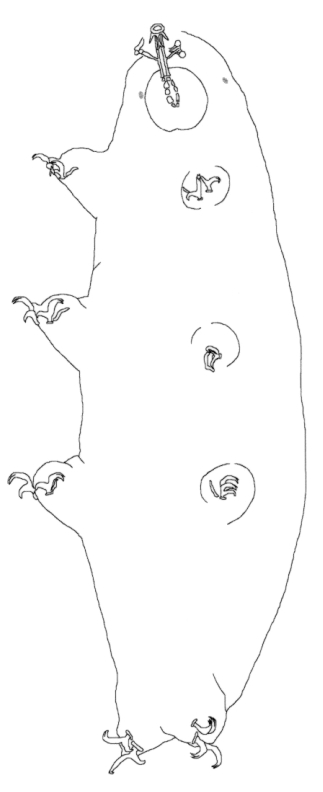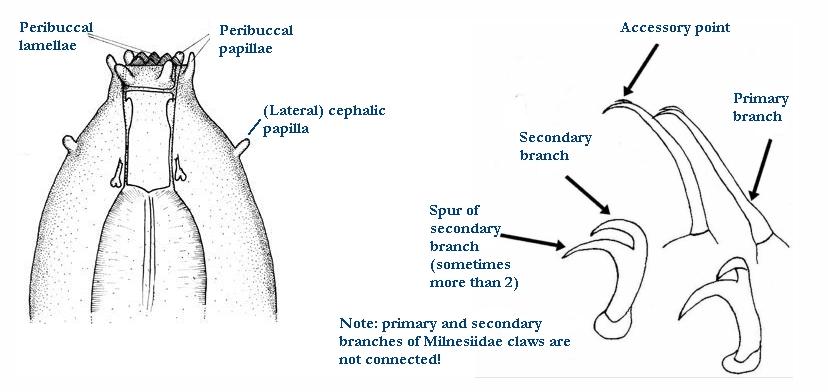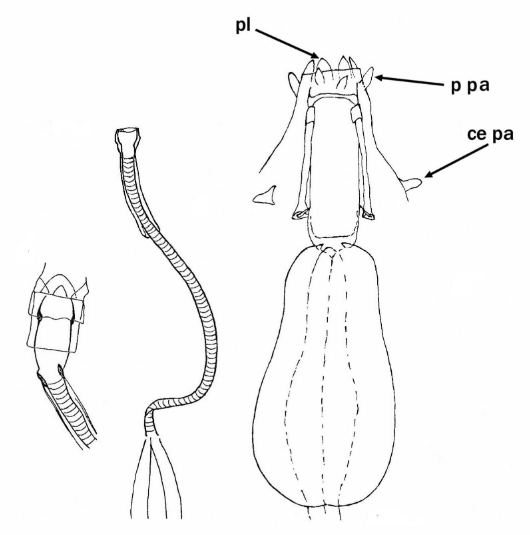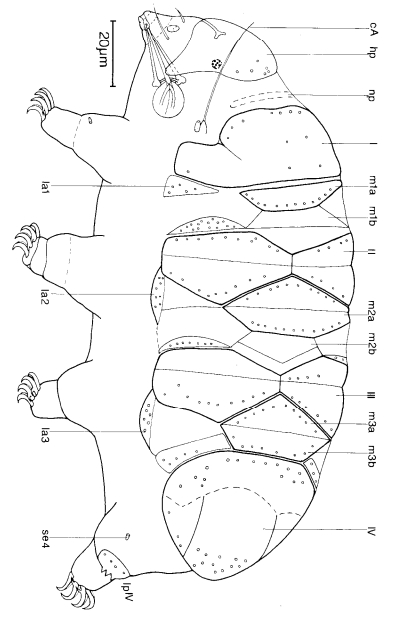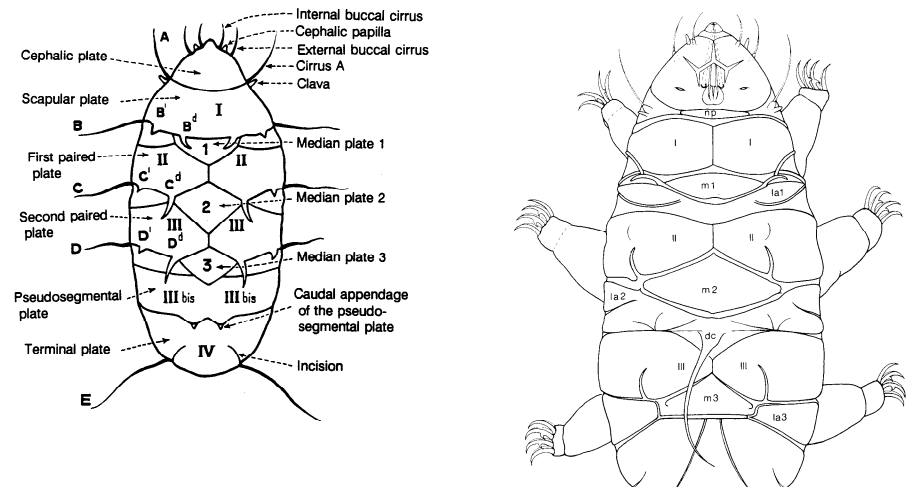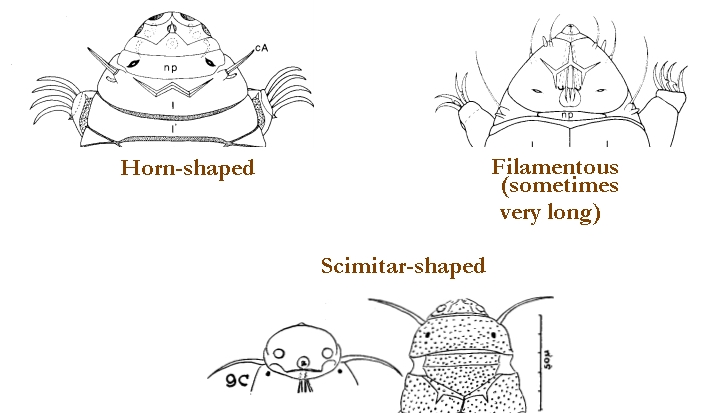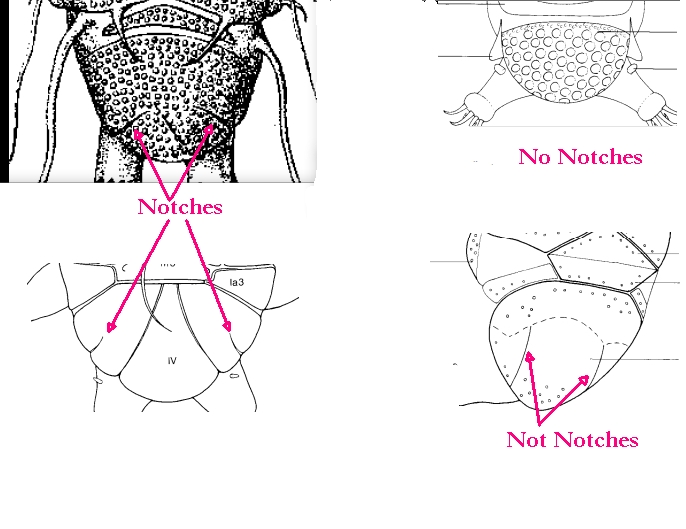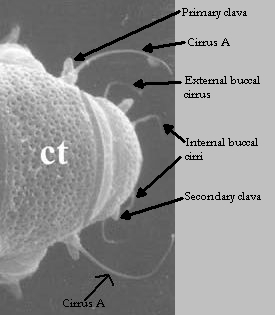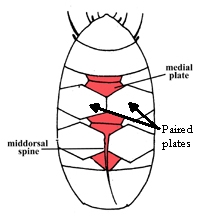Genus description from Pilato 1992: “Hypsibiidae, organi ellittici sul cap assenti; unghie esterne di tipo Isohypsibius ed interne dello stesso tipo ma un po’modificate in quanto l’angolo fra unghia basale e ramo secondario è un po’maggiore di 90°; apparato bucco-faringeo con tubo boccale rigido, privo di sbarretta di rinforzo ventrale e con una lieve asimmetria rispetto al piano frontale in quanto le apofisi ventrale e dorsale per l’inserzione dei muscoli degli stiletti, che sono ad uncino, risultano lievemente diverse l’una dal l’altra: quella ventrale ha l’estremità caudale appuntita, quella dorsale, più massiccia, ha l’estremità caudale smussata ed ingrossata. Mancano lamelle periboccali; bulbo faringeo con apofisi e placoidi.”
Translated: Hypsibiidae, elliptic organs on the head absent; external claws of the Isohypsibius type and internal of the same type but slightly modified since the angle between the basal claw and the secondary branch is slightly greater than 90°; bucco-pharyngeal apparatus with a rigid buccal tube, without a ventral reinforcement bar and with a slight asymmetry with respect to the frontal plane as the ventral and dorsal apophyses for the insertion of the muscles of the stylets, which are hooked, are slightly different one from the other: the ventral one has a pointed caudal end, the dorsal one, more massive, has the caudal extremity blunted and enlarged. Peribuccal lamellae are missing; pharyngeal bulb with apophyses and placoids.


Citations:
Pilato G. 1992. Mixibius, nuovo genere di Hypsibiidae (Eutardigrada). Animalia. 19 (1/3): 121-125.
